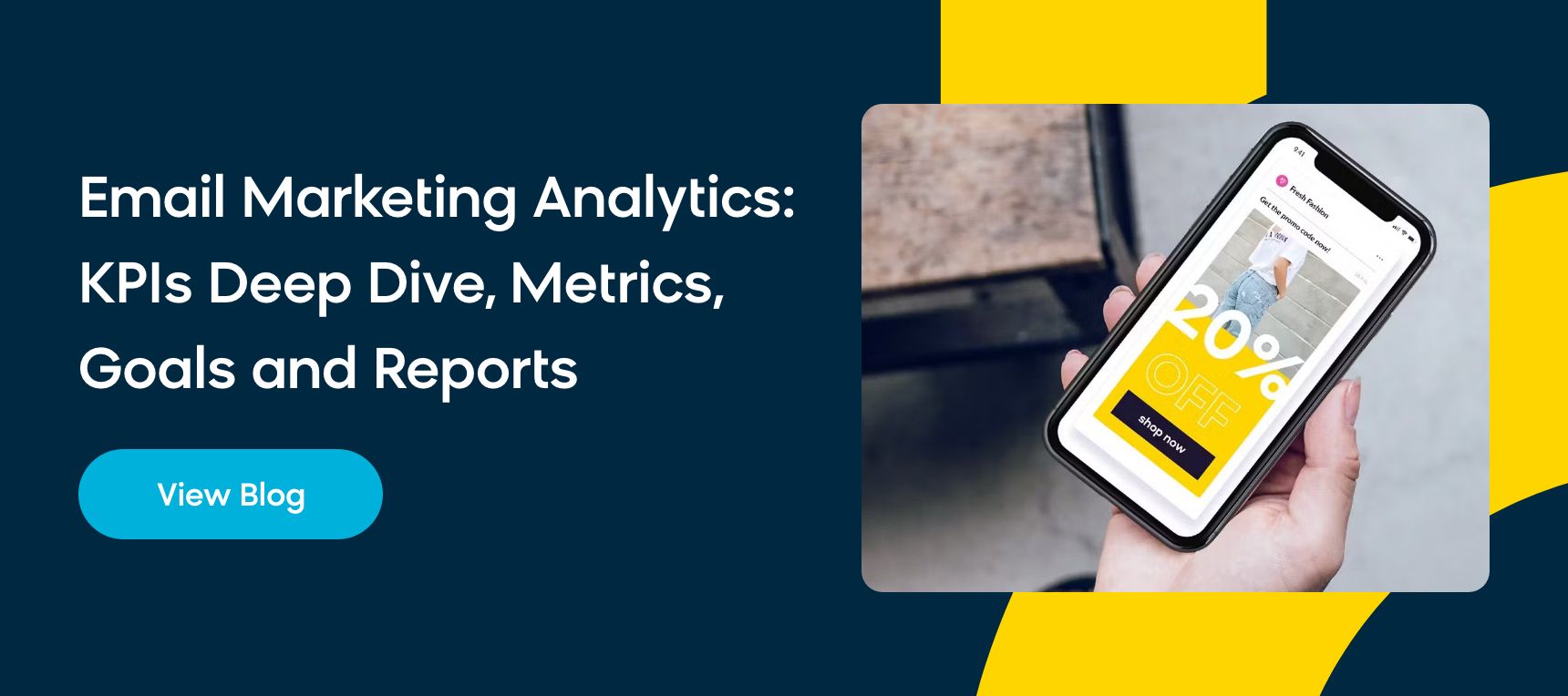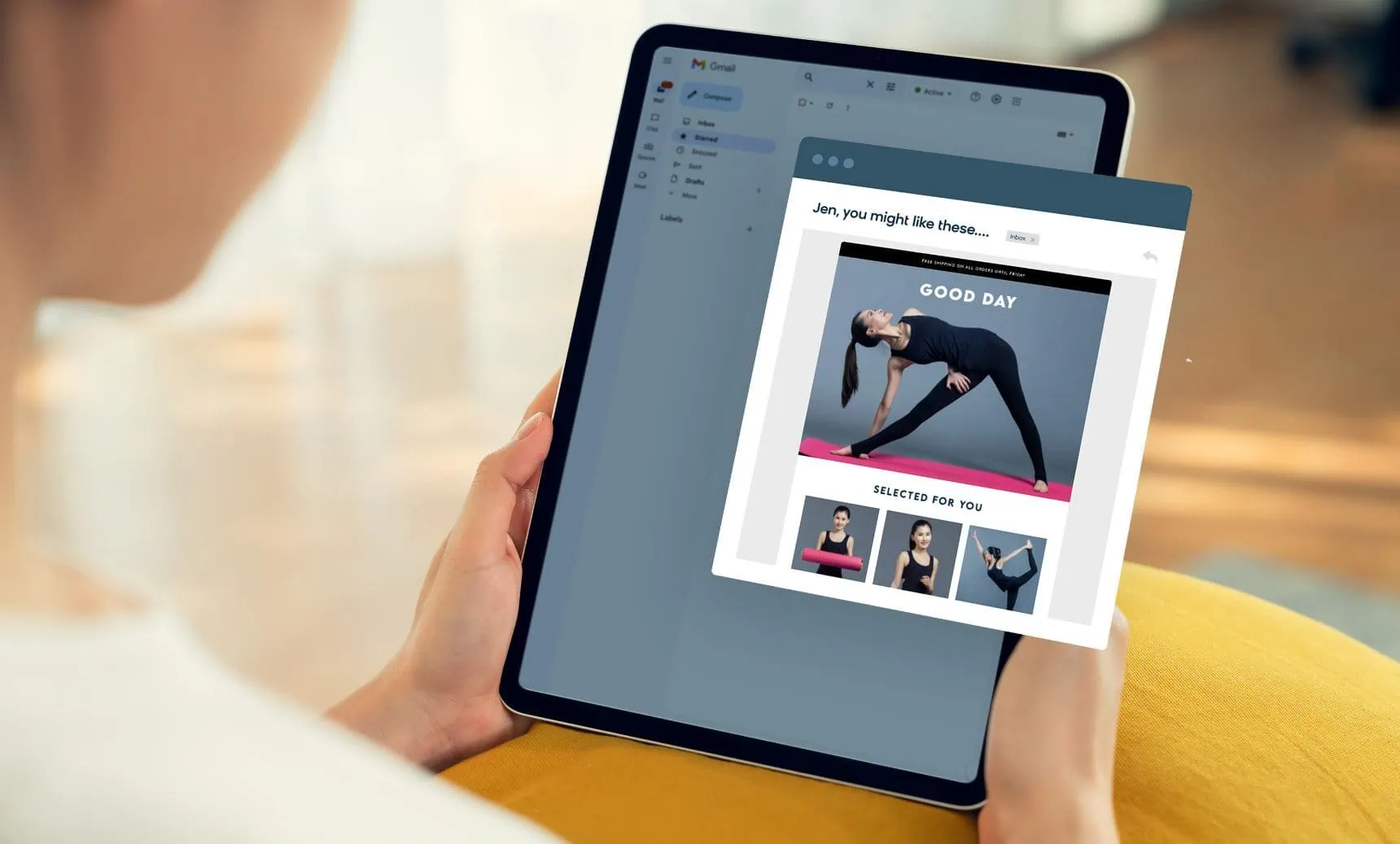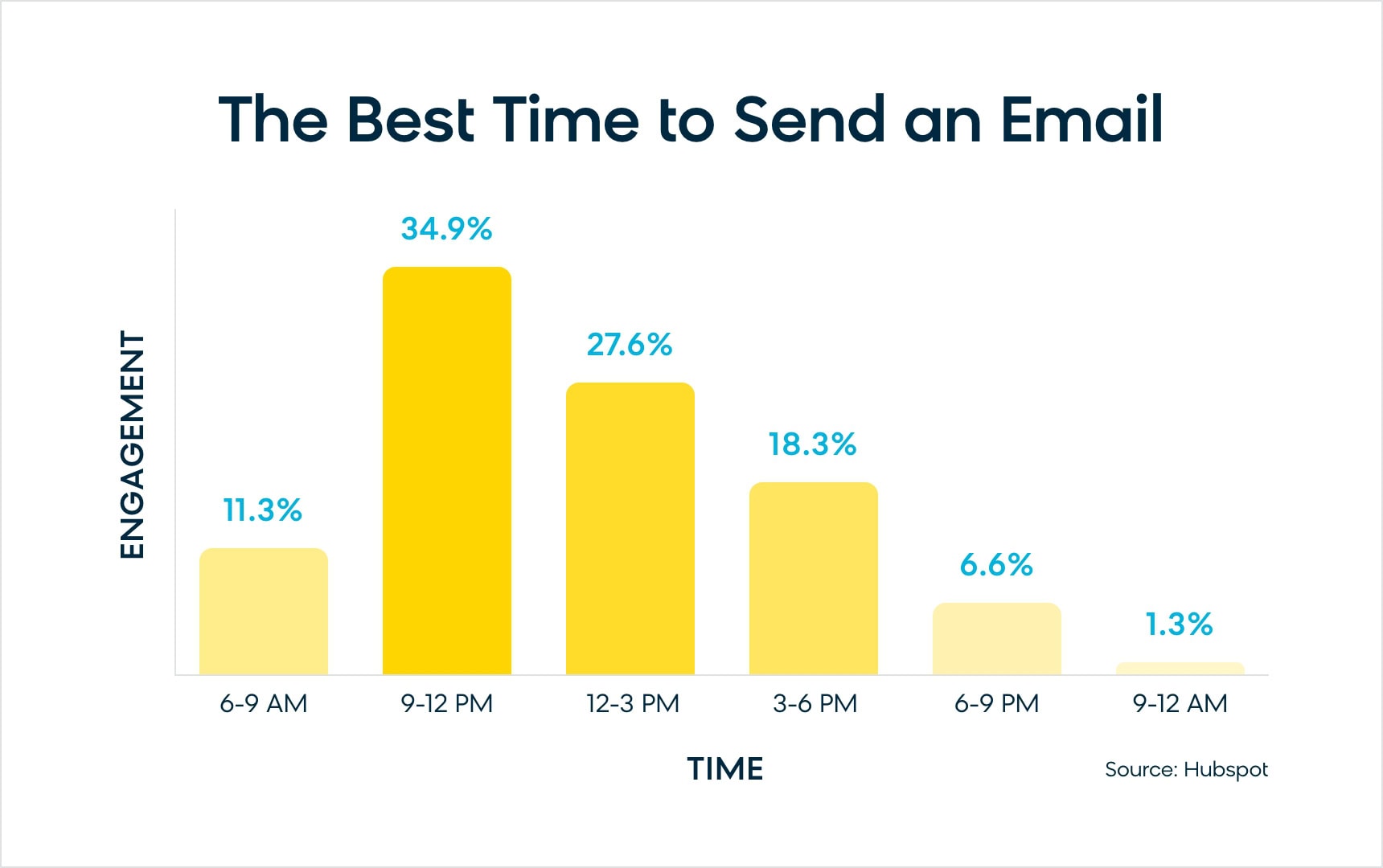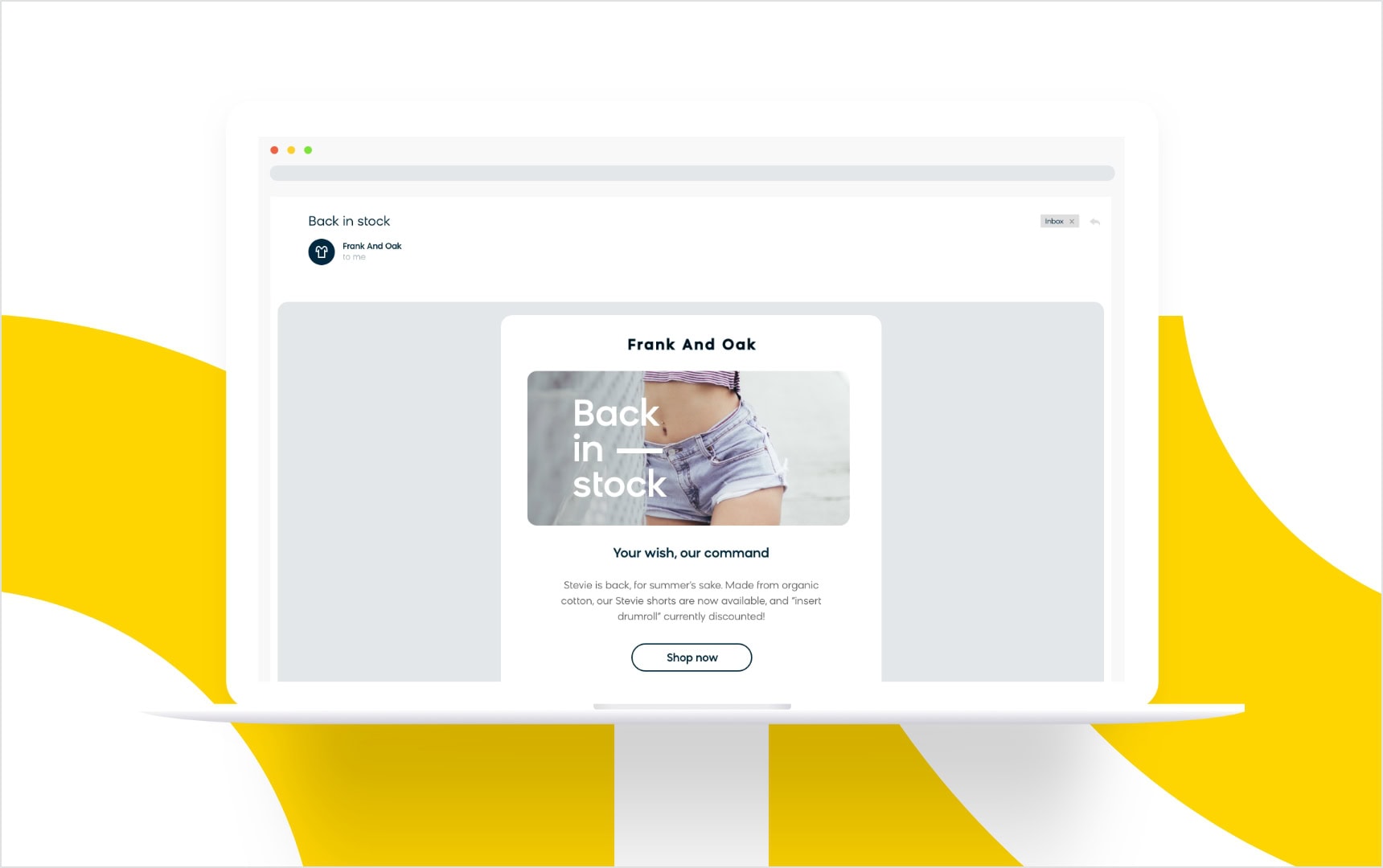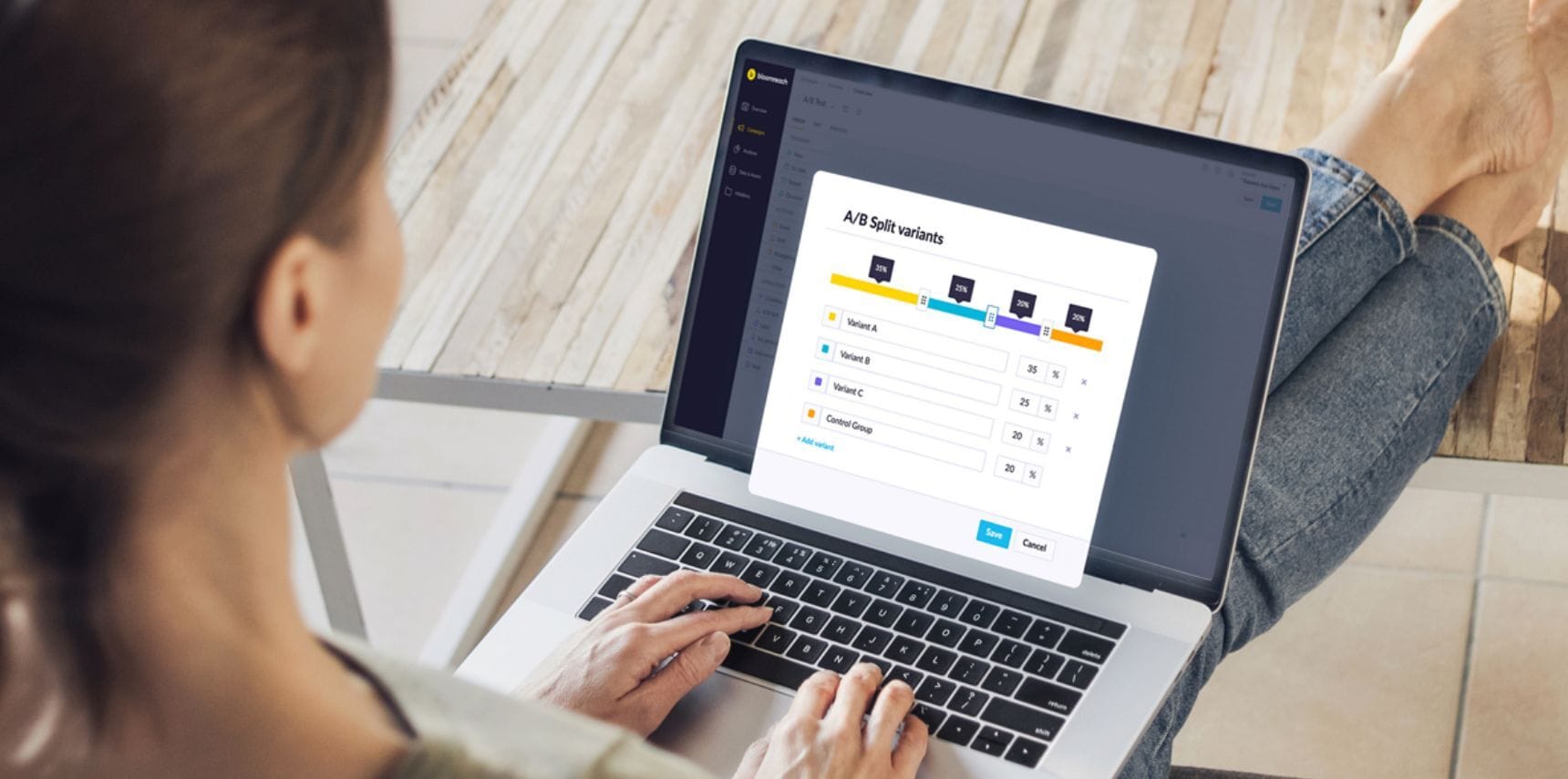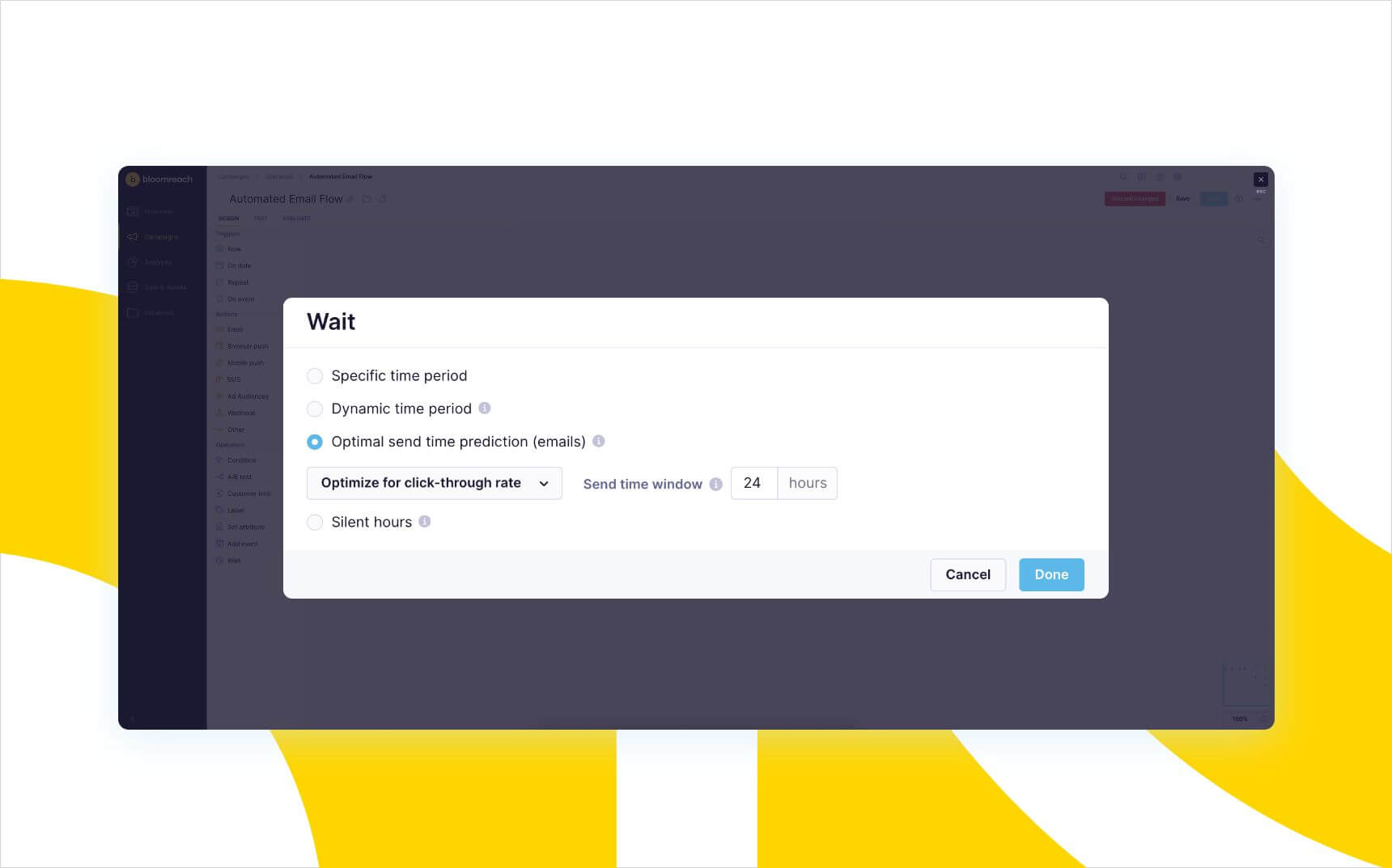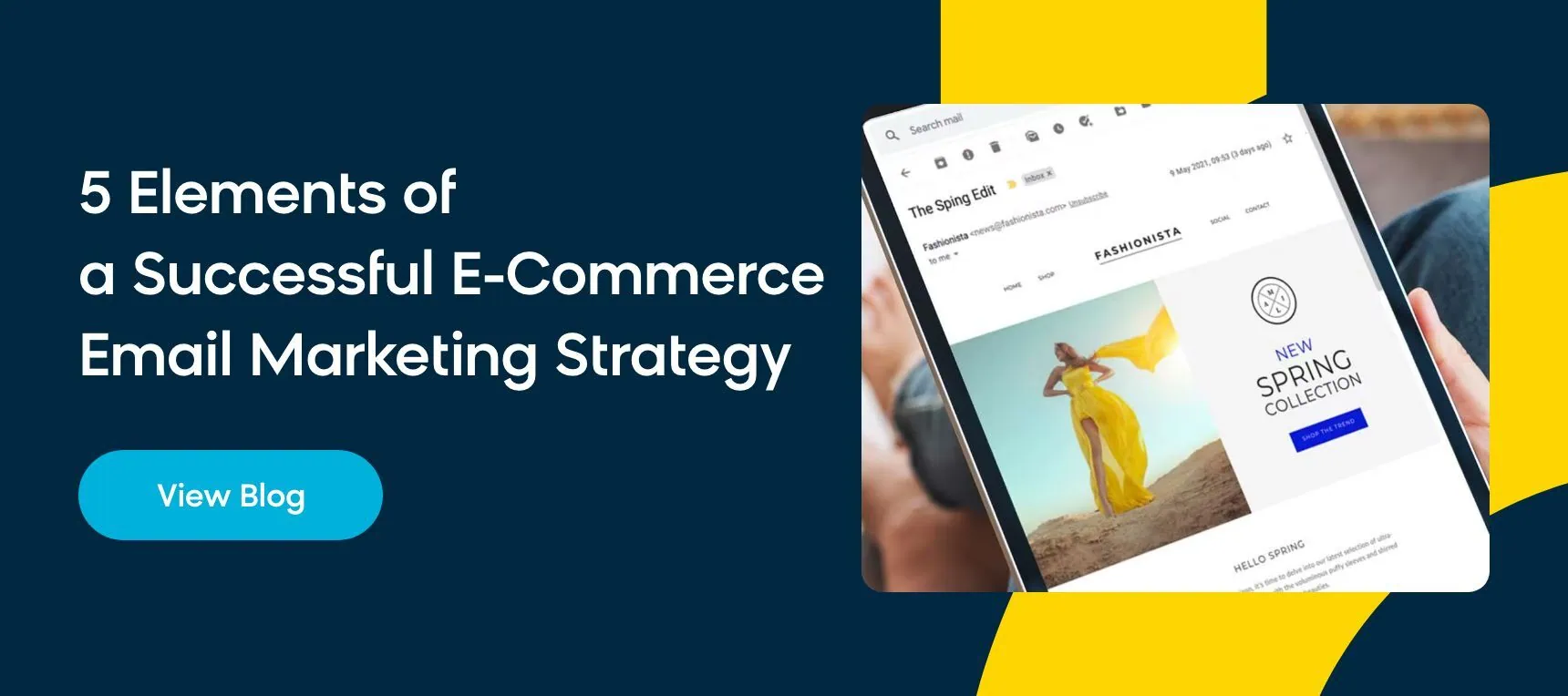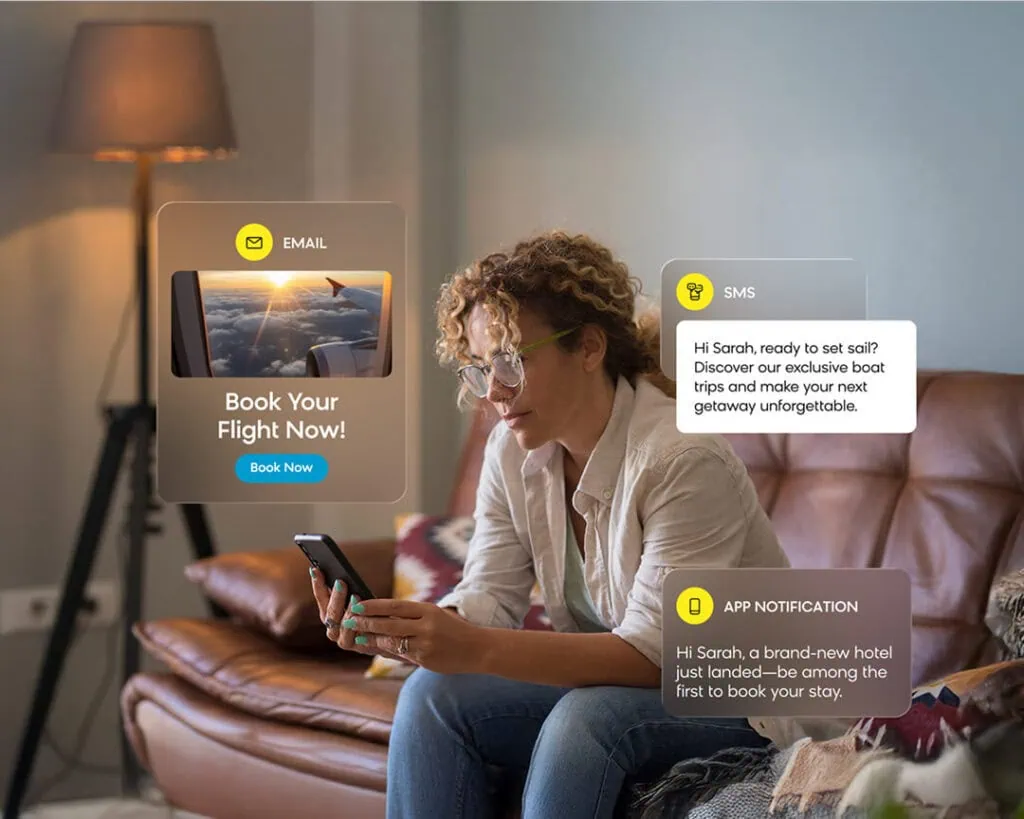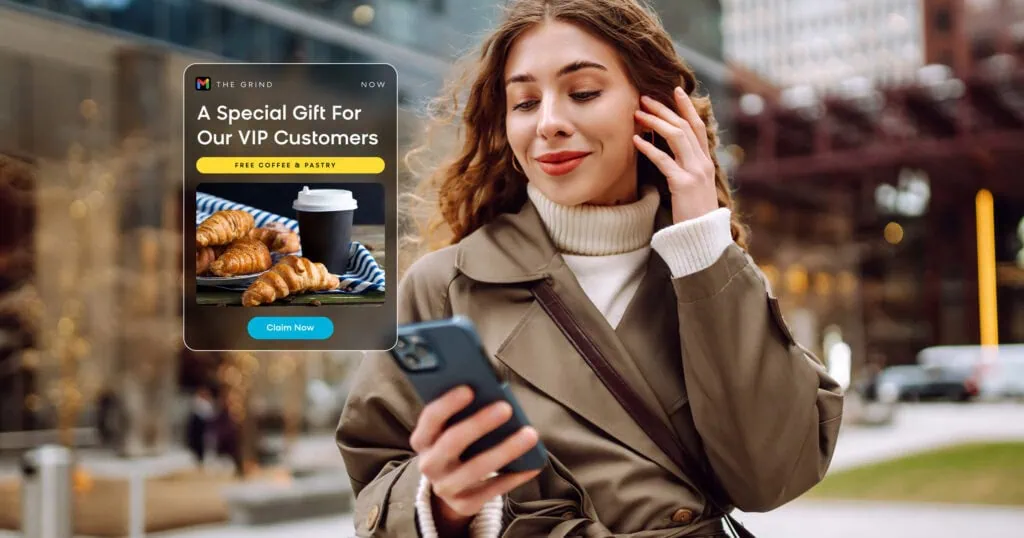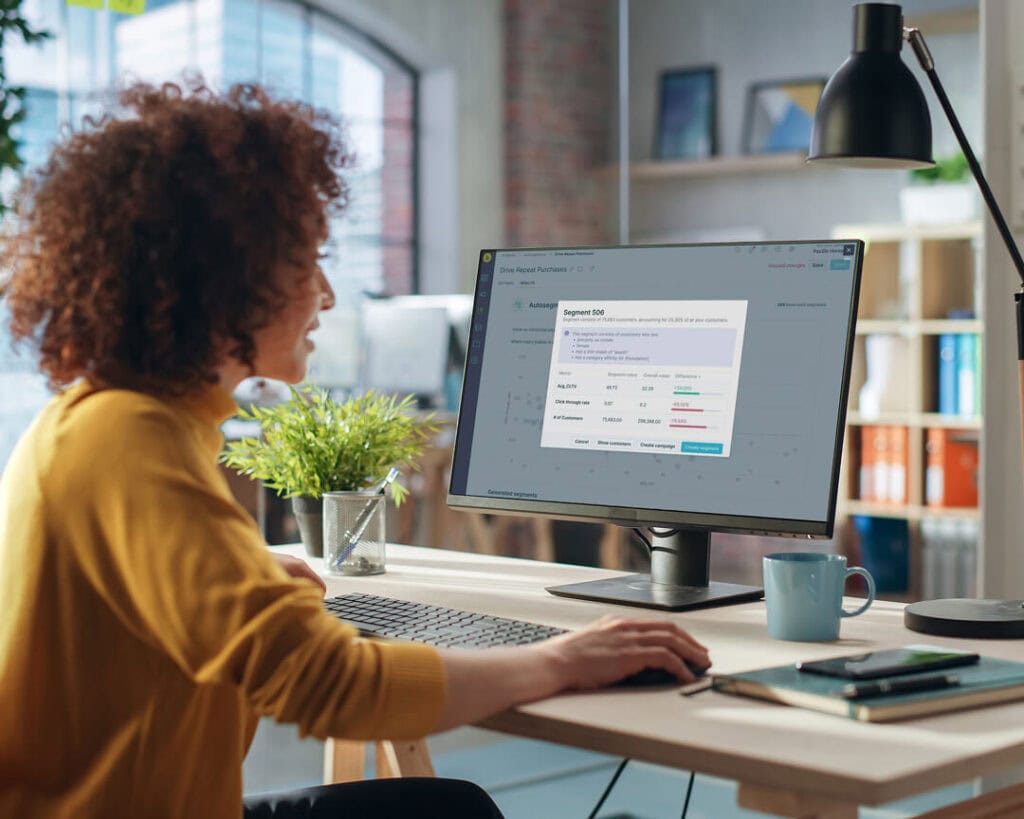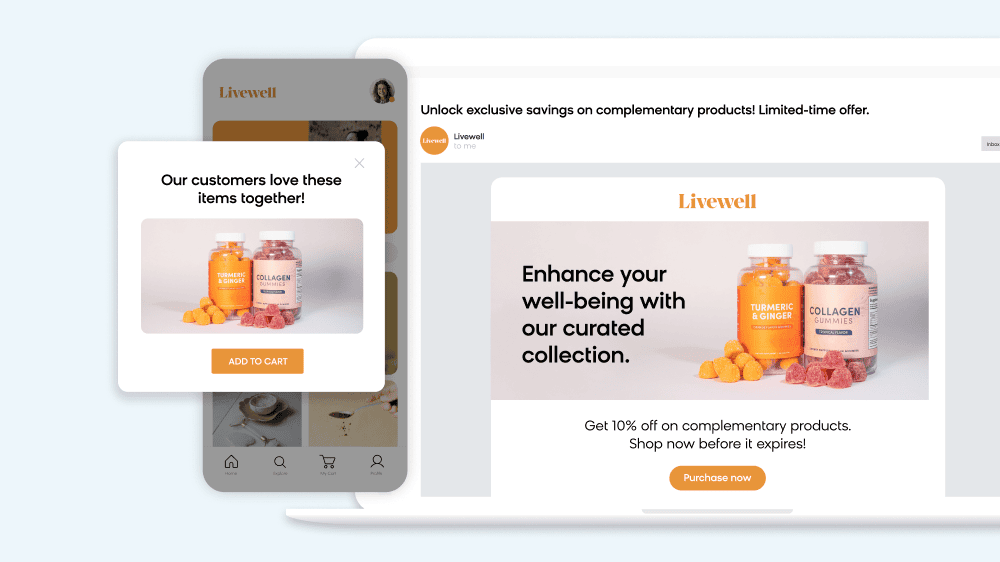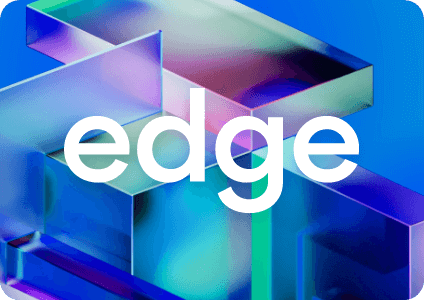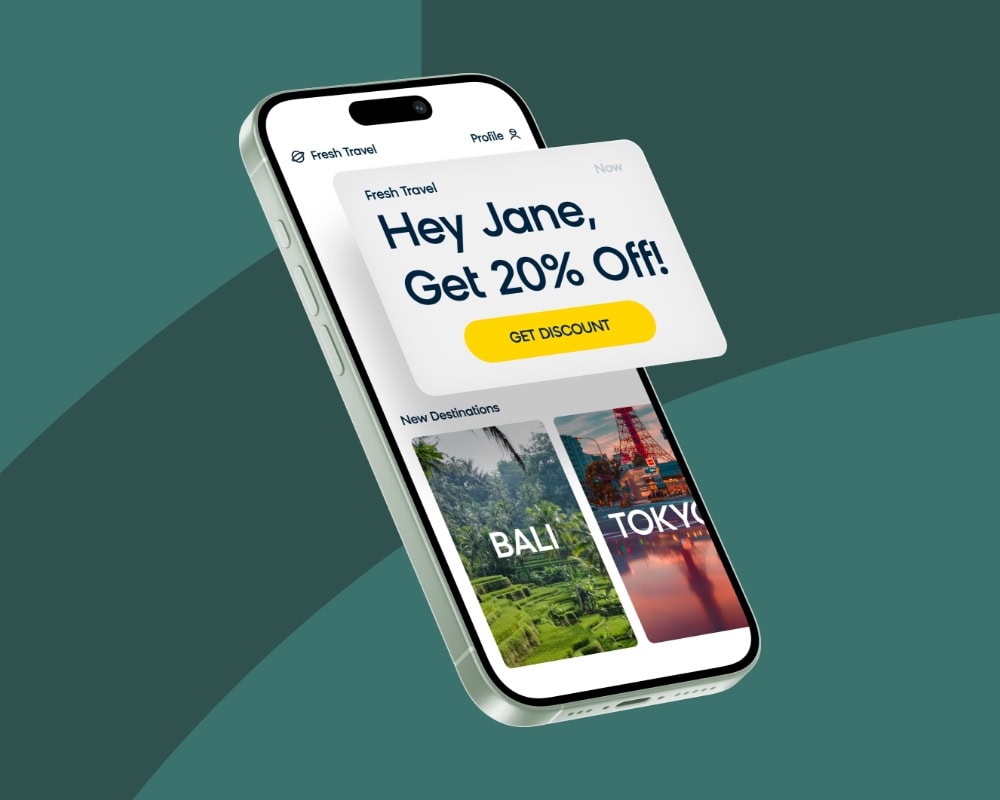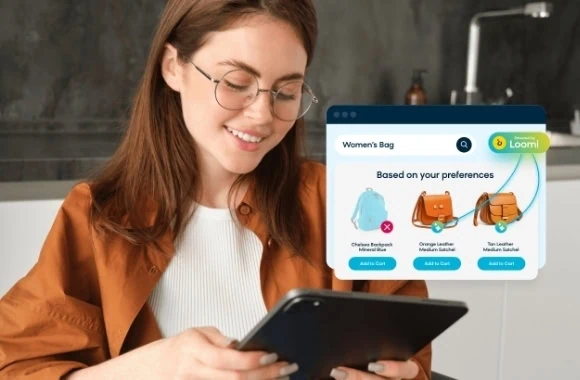Every marketer knows that email marketing is a powerful tool that businesses can use to connect with their audience. So much so that every aspect of marketing emails is considered important and test-worthy — from the subject line to the CTA you use to entice your subscribers to click through, it all plays a major role in successful email campaigns.
But one of the most crucial elements that often gets overlooked is determining the right time to send your emails. If you don’t hit your subscribers’ inboxes at the right time, you risk getting buried in their inbox, not getting any response, and losing out on potential conversions.
But what is the best time to send an email campaign? The answer isn’t always cut and dry, especially if you want your emails to reach peak performance and maximize your customer engagement.
In this blog, we’ll explore why timing matters for email marketing, reveal 7 proven practices for determining optimal send times, and give you all the tools you need to send your emails at the right time and reach your audience when it counts.
Why Does Timing Matter for Email Marketing?
Finding the best time to send marketing emails can have a huge impact on your KPIs, including:
Improved Open Rates
The timing of your email can greatly affect your open rates, which is a top-priority metric for building email engagement. Sending emails at the right time ensures that they land in your subscribers’ inboxes when they are most likely to see them instead of falling through the cracks.
The average email open rate across all industries is 42.35% as of 2025, representing a significant improvement from previous years due to enhanced email marketing practices and measurement changes.
It’s important to track and analyze your email campaign metrics as you build out your strategy — good analytics are vital for achieving the highest open rates and reaching your campaign goals.
Read This Next: Email Marketing Analytics: KPIs Deep Dive, Metrics, Goals, and Reports
Better Click-Through Rates
Timing also affects the click-through rates of your email campaigns. When you send emails at the right moment, your recipients are more likely to engage with your content, click on links, and take desired actions. This can lead to increased website traffic and conversions.
Click-through rates vary significantly by industry, with retail averaging 1.34%, B2B services at 2.21%, and nonprofits reaching 2.66%. These benchmarks provide realistic targets based on current market performance.
Increased Audience Reach
By considering the best timing for your email campaigns, you can reach a larger portion of your target audience. Different segments of your subscriber base may have varying preferences and behaviors, so it’s important to tailor the timing of your emails based on these variations.
For instance, if your target audience is mostly located in the United States and Europe, you might want to split up your campaigns and send emails during different times of day for each region. This ensures that they’re seeing your message when they’re awake and likely to be checking their email.
When you take the diversity of your recipients into account, you can capture the attention of a wider audience, maximizing your reach and potential impact.
7 Proven Practices for Optimal Email Send Times
Choosing the best time to send emails shouldn’t be a shot in the dark. Adopting an informed, methodical approach is an effective way to determine the right time to launch your campaigns.
Here are 7 proven practices to optimize your email timing strategy:
Practice 1: Leverage Weekday Performance Advantages
Research consistently shows that weekdays generally outperform weekends for email marketing. According to HubSpot’s 2025 survey, 27% of US marketers report Tuesday as their highest engagement day, followed by 19% citing Monday and 17% citing Thursday.
Brevo’s analysis recommends Tuesday and Thursday as optimal sending days, with the best engagement occurring between 10:00 AM and 3:00 PM. However, recent data reveals surprising insights: email open rates peak at 8 PM (59%), followed by 2 PM (45%) and 11 PM (40%), suggesting evening sends may be more effective than traditional business hours.
Practice 2: Build on Industry-Specific Best Practices
The best email send times can vary by industry. Researching the best practices for your particular business type is a good starting point when determining the optimal time to send your emails.
Based on current performance data, here are updated industry benchmarks:
|
Industry |
Best Day (On Average) To Send an Email Campaign |
Best Time (On Average) To Send an Email Campaign |
|
Ecommerce |
Tuesday or Thursday |
10:00 a.m. |
|
Software/SaaS |
Tuesday or Thursday |
2:00 p.m. – 3:00 p.m. |
|
Marketing Services |
Wednesday |
4:00 p.m. |
|
Offline Retail/Hospitality |
Thursday |
8:00 a.m. – 10:00 a.m. |
|
Professional Services (B2B) |
Monday or Tuesday |
8:00 a.m. – 10:00 a.m. |
|
Nonprofits |
Tuesday or Thursday |
3:00 p.m. – 4:00 p.m. |
While these send times aren’t hard-and-fast rules, they’re updated benchmarks to build and test your campaigns against, reflecting 2024-2025 performance data.
Practice 3: Analyze Your Audience Behavior and Demographics
Understanding your audience’s behavior and demographics is crucial for timing your email campaigns effectively. Factors like age, location, and job title can all play a role in determining when it’s best to reach them.
You need to know your customers on an individual level, taking their work schedules, time zones, personal tastes, and cultural norms into account.
The only way to do this is by leveraging data and analytics to gain insights into their preferences. With a comprehensive view of your audience — created by compiling accurate data points like their purchase history, site activity, personal details, etc. — you can tailor your email timing accordingly.
Practice 4: Align Timing with Your Campaign Goals
Like all marketing efforts, aligning your email timing with your overall goals is essential. You need to consider the nature of each campaign, the actions you want your audience to take, and whether it’s time-sensitive or requires immediate action.
For example, if you’re promoting a flash sale, sending emails at the right time becomes even more critical to create a sense of urgency and drive conversions. This urgency differs substantially from the timing needs of weekly newsletters or recurring email blasts, where you want your email schedule to establish an ongoing relationship that your email subscribers can grow to expect.
Triggered campaigns like back-in-stock alerts or abandoned cart emails need a different approach to choosing their timing, while a seasonal sale announcement has to be scheduled to appeal to a vast segment of your audience, likely across multiple time zones and with a diverse array of individual preferences.
Whatever your goal may be, it’s a factor that should be taken into account when calculating the send time of your email marketing campaign.
Practice 5: Optimize Email Timing Across Device Preferences
The device your audience uses to check emails significantly impacts optimal timing strategies. With 41% of all emails opened from mobile devices, mobile optimization has become critical for email success.
Mobile users demonstrate different engagement patterns than desktop users, but the gap is narrowing. Mobile emails now achieve an average click-through rate of 3.5%, approaching desktop performance levels.
42% of recipients will delete emails that aren’t optimized for mobile devices, making mobile-friendly design more important than specific device-based timing strategies. Focus on responsive design and clear mobile layouts rather than trying to target device-specific send times.
AI-powered personalization can automatically optimize send times based on each recipient’s preferred device and engagement patterns, ensuring your message reaches them when they’re most likely to engage meaningfully with your content.
Practice 6: Consider Global Time Zone Optimization
Managing email campaigns across multiple time zones requires sophisticated approaches based on current regional data. GetResponse’s analysis provides updated insights for different regions:
EMEA (Europe, Middle East, Africa): Optimal sending times fall between 8 AM and 7 PM local time, much broader than previously thought. Interestingly, the highest click-through rate occurred at 1 AM, though this was based on limited volume.
Asia-Pacific: Contrary to common assumptions about evening preferences, optimal send times align with business hours (9 AM – 6 PM), with 11 PM showing the highest click-through rates at 3.11%.
Central and Eastern Europe: Analysis shows two distinct engagement peaks: 10 AM – 12 PM and 5 PM – 7 PM, with 7 PM demonstrating the highest overall engagement rates.
AI-powered automation tools can handle timezone personalization at scale, ensuring each subscriber receives your message at their optimal engagement window based on actual regional performance data.
Practice 7: Master Weekend Email Strategy
Weekend email performance shows surprising strengths that contradict traditional wisdom. 2025 analysis reveals that Saturday engagement peaks at 7 AM and 9 AM with a 49.1% average open rate, while Sunday shows the highest engagement at 9 AM with a 49.6% average open rate.
However, these impressive weekend statistics come with important caveats: far fewer campaigns are sent during weekends, making the data less reliable than weekday performance. Brevo’s research confirms that over 85% of opened marketing emails were sent on weekdays, and over 90% of clicked emails occurred on weekdays.
Weekend sends work best for B2C brands, entertainment companies, and lifestyle content where the relaxed weekend mindset aligns with your messaging. Avoid weekend sends for urgent business communications or B2B campaigns where weekday attention is essential.
Why Testing Is Crucial To Find the Right Send Times
For email marketers looking to optimize their efforts, knowing the email send times that work best for most businesses isn’t enough. You need to constantly fine-tune your send times with more and more data, and A/B testing email campaigns is one of the best tools that companies can use to gather valuable insights and perfect their email marketing campaigns.
A/B testing is a method of comparing two variations of a single variable to determine which performs better. It’s fundamentally a simple process: You have two options, which you put into practice for like-minded audiences, and see which one makes the most impact. Once a winner is clear, you can send it to the rest of your audience.
This approach is a tried-and-true way to improve send times that email marketers have used for years. With the right marketing automation software, you can easily test sending emails at different times or days of the week to determine the ideal time for your subscribers.
Are recipients more likely to click on your email during the morning or the afternoon? Do weekdays work best for your newsletter emails or would the weekend get more clicks? What about for different campaigns like new product launches or special offers?
The more you test with the right questions and metrics in mind, the better your campaigns will perform. Each test you run provides you with more first-party data, offering unique insights into your specific audience that are essential for any successful, data-driven strategy.
How AI Can Optimize Your Email Send Times
While following best practices and consistent A/B testing are some of the best tools to sharpen your email send time strategy, there’s a barrier to success that marketers can’t break on their own: the simple fact that there is no best time to send an email that applies to all customers.
Your customers are unique. Some might want to engage with your email on a Monday morning, while others might want to open and click through on a Friday night. And even if you A/B test these two variables, you’ll need to choose a winner and commit to it — the best you can hope for is to make a majority of your subscribers happy.
For most of email’s reign as the top-performing channel, this was a fact of marketing. It was impossible to pinpoint the email optimal send time for each individual subscriber. Delivering the same email to each recipient at different times based on their likelihood of engagement was beyond what email scheduling software could do.
But now, artificial intelligence gives marketers the power to do just that. Optimal send time optimization uses the power of AI to channel all the relevant data points you have on a customer — like their previous email engagement, their behavior across other channels, and more — to calculate the best send time for their individual needs.
Current data shows that 50.7% of US and EU marketers believe AI is more effective than traditional approaches in email marketing, with AI-driven strategies leading to a 13% increase in click-through rates and a 41% rise in revenue compared to traditional methods.
With the ability to analyze vast amounts of data, our AI can apply this optimization across your entire audience, determining each subscriber’s best send time and storing this data in their individual customer profile.
You can create truly personalized email campaigns that don’t have to rely on aggregate send times for your entire audience — with send time optimization, they’re sent when each recipient is most likely to open or click.
Always Send the Right Email at the Right Time With Bloomreach Engagement
Timing is everything for marketing campaigns, and emails are no different. It’s one of the many aspects of your email marketing strategy that needs to be optimized and personalized to get ahead in a crowded digital landscape.
With Bloomreach Engagement, you have everything you need to create and execute the best email marketing strategies. Our platform is an omnichannel marketing solution that brings together all your customer data, automation, AI, and analytics in one place. Marketers can build personalized campaigns, test their results, and tailor all their communications to craft long-lasting customer relationships.
The 7 proven practices outlined in this guide provide a foundation for optimizing your email timing strategy, but the future lies in AI-powered personalization that delivers the right message to each subscriber at their optimal engagement moment.
Looking for more ways to improve your customer experience and enhance your email marketing efforts? Check out our email segmentation best practices guide or explore our customer lifecycle email timing strategies.
Frequently Asked Questions About Email Send Times
What’s the worst time to send marketing emails?
Based on current data, the traditional “worst times” are being challenged. While very early morning (before 6 AM) remains problematic, evening sends at 8 PM and even 11 PM show surprisingly strong performance with 59% and 40% open rates respectively. Monday mornings actually show higher-than-average engagement according to 2025 research.
Should I send emails at the same time every week?
Consistency helps build subscriber expectations for regular content like newsletters, but promotional emails should be timed based on campaign goals and current performance data rather than rigid schedules.
How do I find the best time for my specific audience?
Use A/B testing to compare different send times, analyze your email analytics for engagement patterns, and consider AI-powered send time optimization tools that learn from individual subscriber behavior patterns.
Does email timing matter more than subject lines?
Both are crucial for email success. Timing gets your email seen, while subject lines drive opens. A great subject line won’t help if your email arrives when subscribers aren’t checking their inbox, but perfect timing won’t overcome poor subject line performance.
Can AI really improve my email timing strategy?
Yes, AI shows measurable benefits in email marketing. Current research indicates AI-driven email marketing leads to 13% higher click-through rates and 41% revenue increases compared to traditional approaches, though specific open rate improvements vary by implementation.
Should I send emails on weekends?
Weekend performance varies significantly by industry and audience. While Saturday and Sunday morning show impressive 49%+ open rates, far fewer campaigns are sent on weekends, making this data less reliable. Test weekend sends for B2C, entertainment, and lifestyle content, but avoid for urgent business communications.
How do time zones affect my email campaigns?
Time zones significantly impact engagement, but regional patterns are more complex than simple geographic preferences. Recent analysis shows EMEA performs well 8 AM-7 PM, while Asia-Pacific engagement peaks during business hours despite assumptions about evening preferences.


